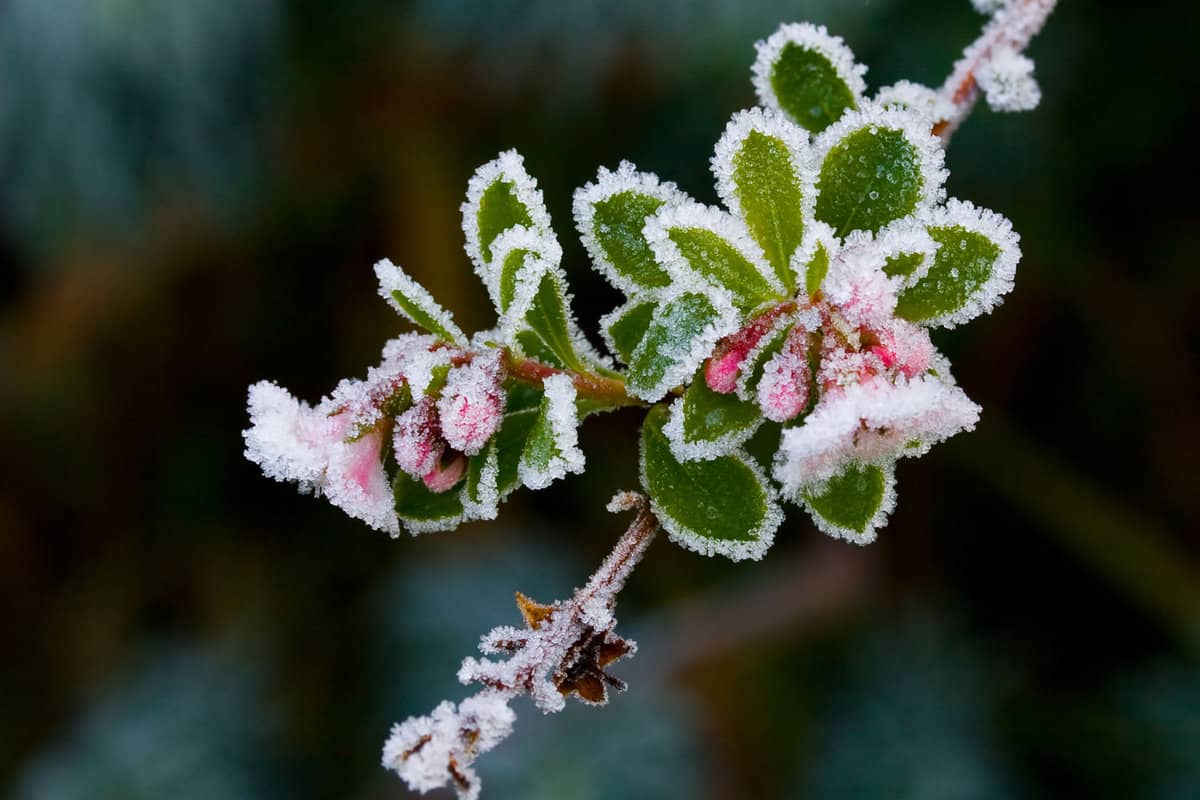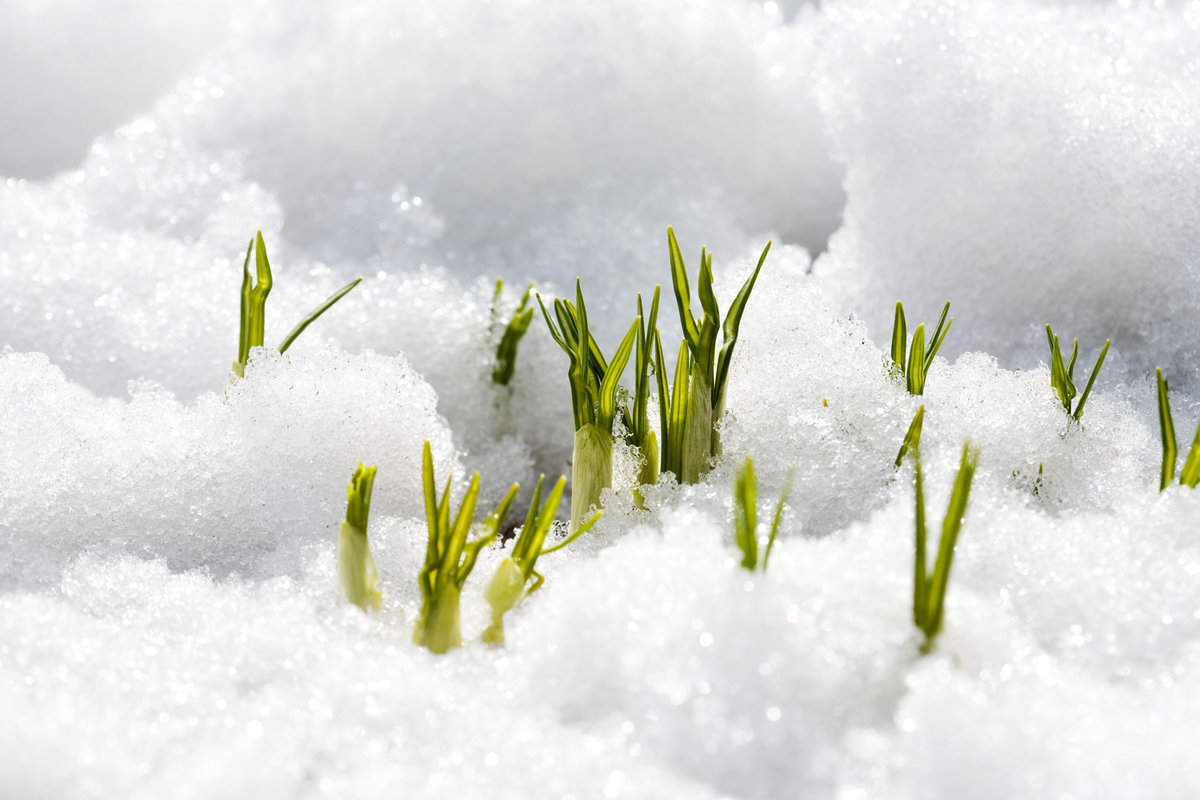As a gardener, you understand the importance of protecting your plants from the harsh effects of an early frost.
The sudden drop in temperature can not only damage foliage, but also harm unprepared roots and reduce your overall harvest.

Don't worry! There are simple hacks that can help you safeguard your garden from these icy conditions.
Early frosts can be unpredictable, but staying informed and preparing ahead of time can lessen the potential damage to your garden.
Signs of Early Frost
Early frost can sneak up on you, so it's essential to keep an eye out for the warning signs. Here are a few indicators you should pay attention to:
Lowering Nighttime Temperatures
Frost typically occurs when nighttime temperatures drop to below 32°F (0°C). Monitor your local weather forecasts and keep an eye out for frost advisories.
Clear Skies and Calm Winds
These conditions frequently lead to a drop in temperature, increasing the probability of frost.
To protect your plants from potential frost damage, it's crucial to promptly identify and respond to these warning signs.
How Frost Affects Plants
Frost can have a significant impact on your garden, and understanding the damage it can cause will help you take the right protective measures.
Here's how frost affects your plants:
Cell Damage
Frost causes water within plant cells to freeze, resulting in cell damage or even rupture. This harms the plant's overall structure and function.
Reduced Vigor and Growth
Cold temperatures slow down a plant's photosynthesis process, leading to a reduction of its overall vigor and growth rate.
Cold Injury
Cold injury can affect every part of a plant. Fruits and flowers are especially sensitive to cold as they can't easily adapt to it.
Rapid freezing can lead to ice formation inside the plant's cells, causing tissue damage and resulting in brown, mushy plant parts.
However, when freezing occurs slowly, ice forms between the cell walls, which hardy plants can often tolerate.
Susceptibility to Diseases and Pests
Frost-damaged plants are more vulnerable to diseases and pests due to their weakened state.
By recognizing the signs of early frost and understanding its effects on your plants, you can take effective measures to safeguard your garden from potential frost damage.
Simple Hacks for Frost Protection
An untimely frost not only halts your plants' growth but can also damage or kill them.

Fortunately, with a few simple hacks, you can give your garden the best fighting chance against the cold. Here's how:
1. Water Your Plants in the Evening
Hydrating your plants in the late afternoon or early evening can be incredibly beneficial.
Water releases heat slowly overnight, which can help in raising the surrounding temperature just a bit, offering some protection against a mild frost.
2. Cover Your Plants at Night
Use materials like old bed sheets, burlap, or frost cloths to drape over your plants. Ensure that the cover touches the ground to trap the earth's warmth.
Remember to remove these covers during the day so that the plants can breathe and get sunlight.
3. Use Cloches or Protective Structures
Cloches, which are bell-shaped covers, can be placed over individual plants or seedlings to shield them from the cold.
You can buy them or even make DIY versions using clear plastic bottles.
If you're looking to protect larger patches, consider setting up cold frames or hoop houses.
Check out these 30-pack garden cloches on Amazon.
Read more on cloches: The Ultimate Hack For Protecting Your Seedlings
4. Spread Mulch Around the Base
Mulch acts as an insulating layer, protecting the roots of your plants.
By spreading straw, leaves, or pine needles around the base of your plants, you can help trap warmth and moisture, offering some respite from the chilly temperatures.
Remember to apply the mulch evenly around your plants and add more as needed throughout the season.
5. Group Potted Plants Together
If you have container plants, group them closely together. This creates a microenvironment that retains a bit more warmth.
Also, remember that pots can be moved, so on particularly cold nights, consider bringing them indoors or placing them in a more sheltered spot.
6. Try a Windbreak
Cold winds can exacerbate the effects of frost. If your garden is in an exposed location, set up temporary windbreaks using burlap, garden fabric, or even old screens.
By blocking the wind, you'll prevent the rapid drop in temperature and reduce the risk of frost damage.
7. Applying Anti-Desiccant Sprays
Anti-desiccant sprays help your plants retain moisture and prevent frost damage by forming a protective waxy coating on their leaves.
This treatment is particularly useful for evergreens and conifers, which can be more vulnerable to cold damage during late spring frost.
Follow the manufacturer's instructions for proper application and reapply the spray if necessary throughout the season.
View this Bonide anti-transpirant plant protector on Amazon.
Selecting Frost Resistant Plants
When it comes to protecting your garden from early frost, a great starting point is to choose plants that are more resistant to frost.
These varieties will give you a better chance at maintaining a healthy garden, even when temperatures drop below freezing.
Consider Native Plants
One option is to look for plants that are native to your area or have been bred for cold-hardiness.
These plants are more likely to be adapted to the local climate and less likely to be damaged by occasional frost.
To find out which plants are best suited for your region, consult your local gardening center or attend a gardening workshop in your community.
Choose Perennial Plants
Another smart choice for frost resistance is planting perennials over annuals.
Perennials are generally more resilient to harsh weather conditions, as they have established root systems that can store energy and nutrients, helping them survive an early frost.
Some examples of frost-resistant perennials include hostas, peonies, and sedum.
Read more here: Can You Plant Perennials Before Last Frost?
Plant at the Right Time
In addition to selecting the right plants, it's important to pay attention to timing.
Planting your garden too early in the season can make it more vulnerable to frost damage.
Keep an eye on the last expected frost date in your area, and try to plant a week or two after that date to ensure that your garden has the best chance of thriving.
Smart Garden Layout
Additionally, consider implementing a garden layout that takes advantage of microclimates and natural protection.
Plants placed near structures, such as walls and fences, or taller plants can benefit from a bit of added protection against frost.
This can also help to trap warmer air around the more vulnerable plants in your garden.
Try These Hacks to Help Your Plants Survive Early Frost
While we can't control the weather, with these simple hacks, you can certainly make your garden more resilient against early frost.
By being proactive and using these measures, you give your plants the best chance to thrive and continue producing even as the temperatures dip.
Remember, a little effort now can save you from the disappointment of a frost-damaged garden later.
For more information on frost-resistant plants, check out these other resources:
Are Brassicas Shade, Drought, & Frost Tolerant?
Winter Care for Sunflowers: 9 Simple Ways to Keep Them Healthy in Cold Weather


